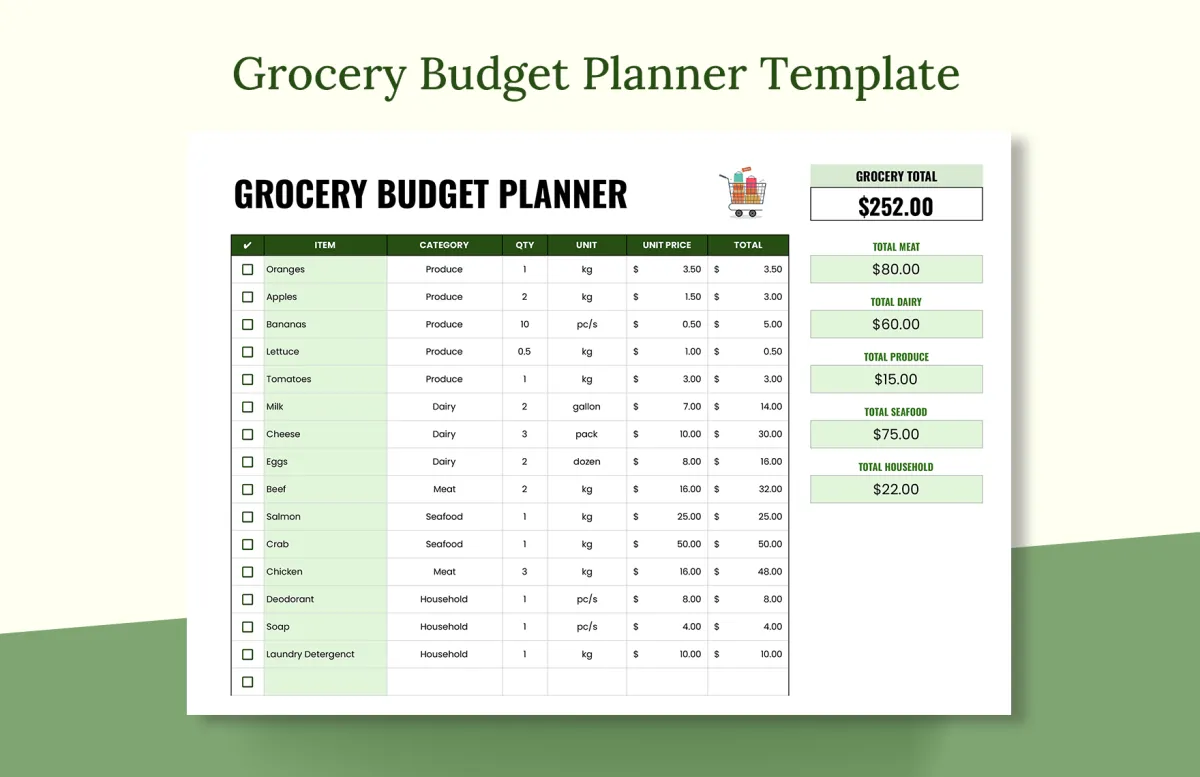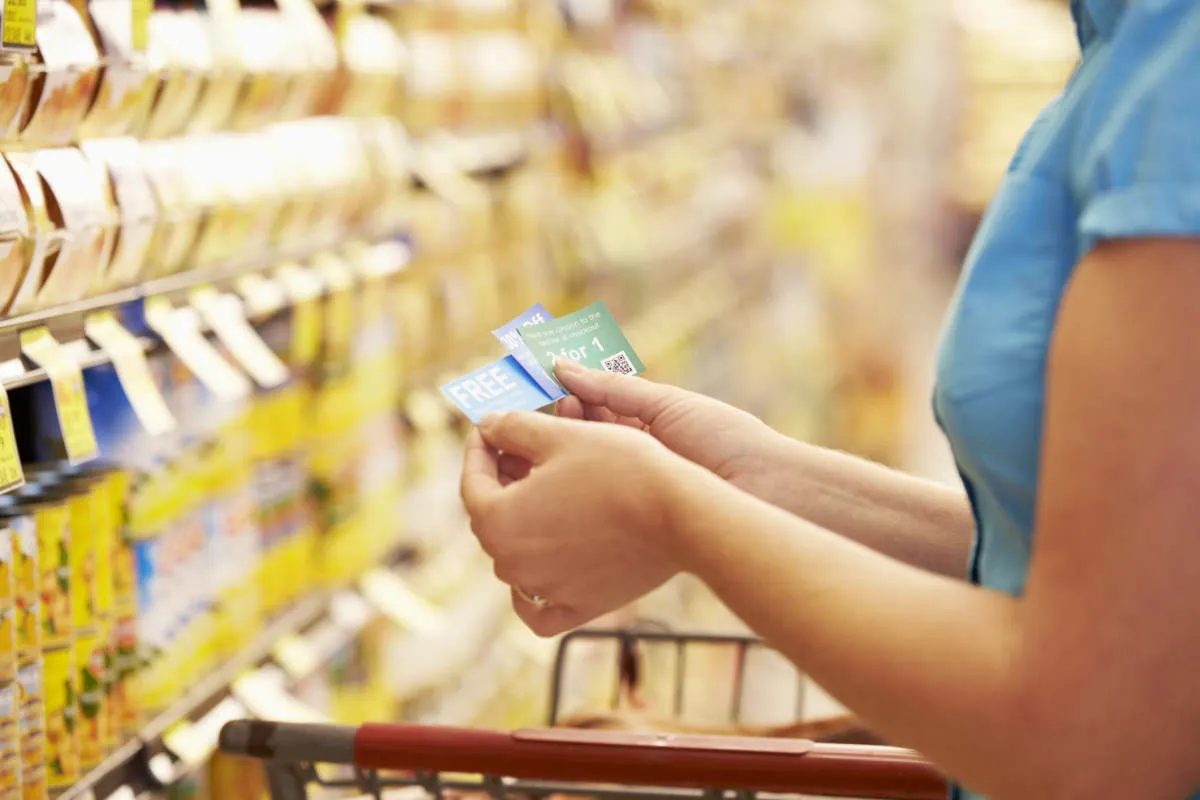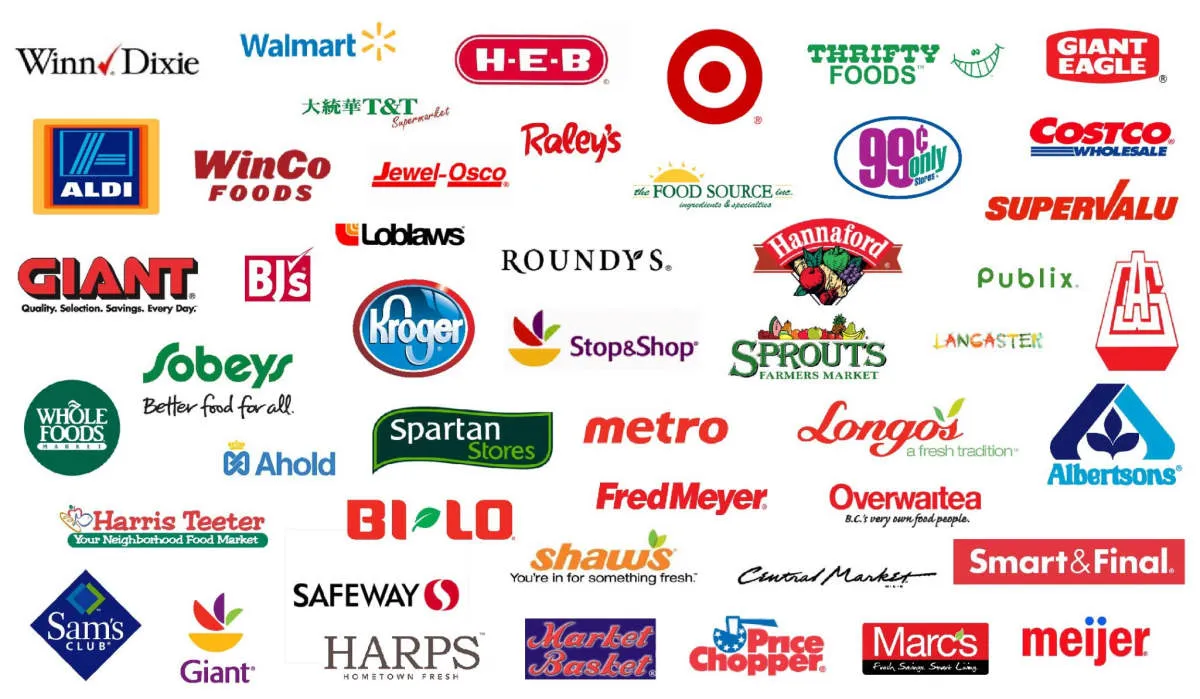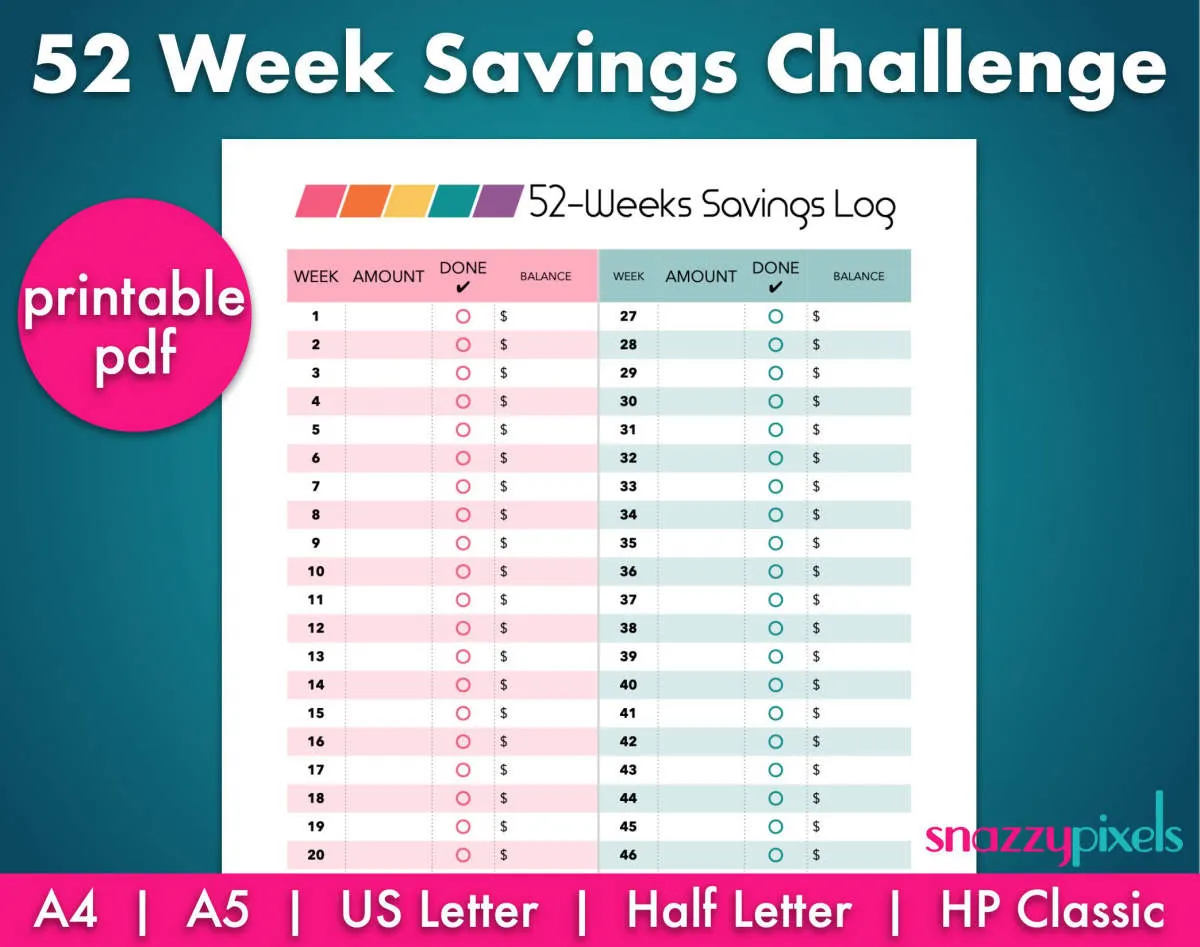Learn how to cut down your grocery expenses with these practical tips and tricks. From meal planning to using store loyalty programs, discover effective strategies to save money on your grocery bills.
Assessing Your Grocery Spending
The first step towards saving money on your grocery bills is understanding where your money is going. It’s easy to walk out of the grocery store with bags full of food and a much lighter wallet without really registering how much you’ve spent or what you’ve spent it on. By assessing your spending habits, you can identify areas where you might be overspending and pinpoint opportunities for savings.
Track Your Grocery Spending
There are several ways to track your grocery spending:
- Use a budgeting app: Many budgeting apps allow you to connect your bank accounts and credit cards to automatically categorize your spending. This can help you see exactly how much you’re spending at the grocery store each month.
- Keep your receipts: At the end of each week or month, sit down and review your grocery receipts. Add up how much you’ve spent and see if there are any patterns in your spending.
- Use a spreadsheet or notebook: Create a simple spreadsheet or notebook to track your grocery spending. Note down the date, store, and amount spent for each trip.
Analyze Your Spending Habits
Once you have a good understanding of how much you’re spending, take some time to analyze your spending habits. Ask yourself the following questions:
- Am I shopping at the most affordable stores?
- Am I taking advantage of sales and coupons?
- Am I buying more food than I need, leading to waste?
- Am I consistently buying expensive convenience foods?
By honestly answering these questions, you can identify areas where you can potentially save money without drastically changing your lifestyle.
Creating a Grocery Budget

A well-planned grocery budget is your roadmap to saving money on food expenses. Here’s how to create one:
1. Track Your Spending
Before setting a budget, spend a week or two noting down every grocery item you buy and its cost. This gives you a realistic picture of your current spending habits.
2. Set a Realistic Budget
Consider your household size, dietary needs, and financial goals. Start with a slightly lower amount than your average spending to challenge yourself to save.
3. Categorize Your Groceries
Divide your budget into categories like produce, dairy, meat, and pantry staples. This helps you allocate funds wisely and spot areas where you tend to overspend.
4. Choose a Budgeting Method
- Cash Envelope System: Withdraw a specific amount of cash for groceries each week or month and leave your cards at home.
- Spreadsheet Tracking: Use a spreadsheet or budgeting app to input your grocery purchases and monitor your spending against your allocated budget.
- 50/30/20 Rule: Consider allocating 50% of your income to needs (including groceries), 30% to wants, and 20% to savings and debt repayment. Adjust these percentages based on your priorities.
5. Be Flexible and Adjust as Needed
Life happens! Be prepared to adjust your budget based on sales, seasonal produce availability, or unexpected expenses. The key is to have a plan and stick to it as closely as possible.
Shopping with a List
One of the simplest yet most effective ways to save money on groceries is to shop with a list.
Creating a list before you step foot in the store helps you to:
- Stay focused: You’re less likely to make impulse purchases when you have a clear plan of what you need.
- Avoid duplicates: Ever bought something only to realize you already had three at home? A list prevents that.
- Maximize your budget: Knowing what you need helps you stick to your budget and avoid overspending.
Tips for an Effective Shopping List:
- Plan your meals for the week and base your list on those meals.
- Check your pantry and fridge to see what you already have and avoid buying duplicates.
- Organize your list by category (produce, dairy, etc.) to make shopping more efficient.
- Consider using a shopping list app to keep your list organized and accessible.
Using Coupons and Discounts

Coupons and discounts are your best friends when it comes to saving money on groceries. Here’s how to make the most of them:
Embrace Couponing:
Don’t underestimate the power of coupons! You can find them in various places:
- Newspaper Inserts: Sunday newspapers often have coupon inserts.
- Online Coupon Websites: Websites and apps like Coupons.com, Groupon, and RetailMeNot offer digital coupons and deals.
- Store Apps and Loyalty Programs: Many grocery stores have their own apps or loyalty programs that offer personalized coupons and discounts.
- Manufacturer Websites: Check the websites of your favorite brands for printable or digital coupons.
Become a Strategic Shopper:
Don’t just use coupons randomly. Plan your shopping trips around sales and promotions:
- Study Store Flyers: Look for weekly deals and specials advertised in store flyers or online.
- Stock Up During Sales: When items you use regularly go on sale, stock up to save money in the long run.
- Combine Coupons with Sales: The best savings come from using coupons on items that are already discounted.
Explore Other Discount Options:
Beyond traditional coupons, consider these options:
- Cashback Apps: Apps like Ibotta and Checkout 51 offer cashback rewards for purchasing specific items.
- Discounted Gift Cards: Purchase discounted gift cards for your grocery store of choice from websites like Raise or Gift Card Granny.
- Store-Specific Credit Cards: Some grocery stores offer credit cards with rewards programs that include discounts or cash back on purchases.
Buying in Bulk
One of the most effective strategies for lowering your grocery expenses is buying in bulk. When you purchase larger quantities of frequently used items, you can often take advantage of lower per-unit prices. This is especially true for non-perishable goods like pasta, rice, beans, canned goods, and toiletries.
Consider these factors when buying in bulk:
- Storage Space: Make sure you have adequate space to store bulk purchases, especially for large or bulky items.
- Expiration Dates: Be mindful of expiration dates, especially for perishable goods. Only buy in bulk what you can realistically use before it goes bad.
- Cost Comparison: Always compare unit prices between the bulk size and the regular size to confirm you’re getting a genuine deal.
Warehouse clubs and membership stores can offer substantial discounts on bulk purchases, but factor in membership fees to determine if it’s worthwhile for your shopping habits. Additionally, many grocery stores have bulk sections where you can find deals on larger quantities without needing a membership.
Choosing Store Brands

Don’t underestimate the power of store brands! Often significantly cheaper than their name-brand counterparts, store brands can lead to big savings on your grocery bill. Many store brands are produced in the same facilities as name brands, with the only difference being the packaging and marketing.
Here are some tips for incorporating store brands into your shopping:
- Start with staples: Items like flour, sugar, spices, and canned goods are great places to try store brands.
- Do a taste test: If you’re unsure about a particular product, buy one store-brand item and one name-brand item to compare at home.
- Check for quality guarantees: Many stores stand behind their products and offer satisfaction guarantees on store brands.
Meal Planning and Preparation
One of the most effective ways to save money on groceries is to embrace the power of meal planning and preparation. By taking the time to plan your meals in advance, you can avoid impulse purchases and reduce food waste, ultimately keeping more money in your pocket.
Plan Your Meals Around Weekly Sales and Discounts
Before you head to the grocery store, browse through weekly flyers and online circulars to see what items are on sale. Build your meals for the week around these discounted ingredients, taking advantage of bulk deals and special promotions.
Create a Detailed Shopping List and Stick to It
Once you’ve planned your meals, create a comprehensive shopping list that includes all the necessary ingredients. Organize your list by category (e.g., produce, dairy, pantry staples) to make your grocery shopping trip more efficient. Most importantly, stick to your list and resist the temptation to buy items you don’t need.
Prepare Meals in Advance: Embrace Batch Cooking
Batch cooking is a fantastic way to save time and money. Devote a few hours each week to cook large batches of grains, beans, or proteins that can be used in multiple meals throughout the week. Portion out leftovers into individual containers for easy grab-and-go lunches or dinners.
Transform Leftovers into New Meals: Get Creative
Don’t let leftovers languish in the back of your fridge! Instead, view them as opportunities for culinary creativity. Turn leftover roasted chicken into a hearty soup or salad, or transform yesterday’s rice into a flavorful stir-fry.
Tracking Your Savings

One of the most satisfying aspects of saving money is seeing how your efforts accumulate over time. Tracking your grocery savings is not only motivating but also helps you understand what works best for your spending habits. Here are a few methods to track your grocery savings effectively:
1. Spreadsheet or Budgeting App
Utilize a spreadsheet or a budgeting app to maintain a record of your grocery expenses. Input your budget and track every grocery purchase. Many apps automatically categorize your spending, providing visual representations of your progress.
2. Receipts and a Notebook
The traditional method of keeping all your receipts and noting down the amount spent in a dedicated notebook can be surprisingly effective. This hands-on approach keeps you mindful of each purchase.
3. Cash Envelopes
Allocate a specific amount of cash for groceries each week or month and store it in an envelope. This tangible system provides a clear visual cue of remaining funds and prevents overspending.
4. Take Advantage of Technology
Utilize grocery store apps and loyalty programs to track your savings. Many apps offer digital receipts, track your spending within the store, and even provide personalized discounts.
No matter your chosen method, consistency is key. Regularly tracking your savings helps you stay motivated, identify areas for improvement, and celebrate your success in managing your grocery budget effectively.
Conclusion
In conclusion, implementing smart shopping tactics such as making a list, using coupons, buying in bulk, and comparing prices can significantly reduce your grocery expenses without compromising on quality.

